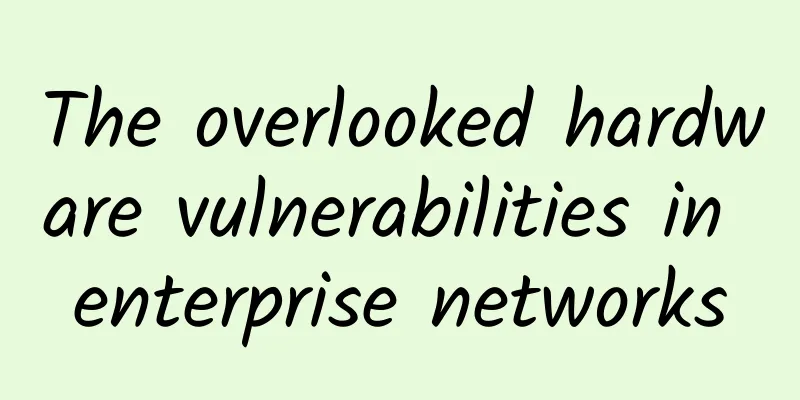Practical knowledge: Types and advantages and disadvantages of wireless network topologies

|
Choosing the most appropriate network layout is critical to the efficient operation of any system. For wireless networks, this is highly relevant as it relates to factors such as latency, power, speed, and redundancy. Modern networks are made up of many different types of devices, such as routers, smartphones, Bluetooth headsets, and smart light bulbs. Each device on the network is called a "node." Network topology describes how different nodes in a network connect and communicate with each other.
Simple network topology There are many network topologies in the industry, each with different advantages and disadvantages. The simplest network is point-to-point. This is a single network connection between two nodes. In practice, it is rare nowadays to need to connect just two nodes, except for certain critical or special applications. A modern example is ad-hoc connections over Bluetooth, used for things like Apple's Airdrop file-sharing service or remote control of items like model airplanes. The easiest way to add more nodes to a network is to use daisy chaining, which comes in two forms: linear and ring. A linear daisy chain would be to connect the third node to one of the existing nodes, the fourth node to the third, etc. This is a simple approach, but quickly becomes impractical as more nodes are added. In a ring network, a third node is connected to two existing nodes at the same time, and each additional node is added between two existing nodes to create a ring. Each node is connected to exactly two other nodes. Data is transmitted around the ring in one or both directions, with each node examining the data and acting on it, or retransmitting it until it reaches its destination. Daisy chaining can be used to create a network for connected devices (such as smart light bulbs), but for most use cases there are better solutions. Solutions for scaling up Once we add a large number of nodes to the network, point-to-point and daisy chaining become inefficient. If two nodes on opposite sides of a 1,000-node ring want to communicate, their data must first pass through 500 other nodes. Daisy chains are also prone to errors, as a single faulty node can cause massive outages and, in the worst case, prevent messages from getting through at all. In bus topology, we connect all the devices to a central backbone (called a bus), which is similar to linear topology but with a single line with multiple single branches. This is a common topology in wired networks, but there is no real analogue in the wireless world. While it is important to understand these topologies, none of them are common in the modern wireless ecosystem. Now we will look at the more common architectures. Star topology for wireless networks The topology that is most useful for wireless networks today is the star topology, in which each node is connected to a central hub that distributes the data to wherever it needs to go. The most obvious example is a home network, where all nodes (phones, printers, tablets, etc.) connect to a wireless access point (hub), which is usually both a router for the local network and a bridge to the Internet. Star networks are ideal for seamlessly connecting wired and wireless nodes at the same time. This is a simple way to implement a wireless network, but it presents two major challenges. The hub at the center of the system is a single point of failure. If the hub fails, the entire network ceases to exist, and devices cannot communicate at all. In addition, devices in a star topology must all be within a certain distance of the hub. To increase resilience and communication range, we need smarter ideas. Mesh Network There are two types of mesh networks, full and partial. In a full mesh network, each node is directly connected to every other node, which is great for resiliency but does not increase communication range. These networks are only implemented in applications such as military networks where 100% redundancy is essential. On the other hand, each node in a partial mesh network is connected to one or more other nodes. Connecting to multiple other nodes increases resilience because there is no single point of transmission failure. At the same time, it also improves communication range because node A may not be in direct communication range with node C, but the message can still be transmitted through node B. Mesh networks are the latest development in the Internet of Things. They theoretically allow the largest devices to connect across the largest distances. Using Mesh networks, resilient smart homes, smart enterprises, and smart cities become a reality. Hybrid Network Today, examples of using a single network topology are actually becoming rarer. Most networks are a mix of one or more different topologies. A tree network is a network that connects multiple star networks together on a bus network. This is often used when there are multiple clusters of nodes, such as in a WAN network. In this case, each node is connected to a router to form a star network, and then the routers are connected together to create a bus connection between them. This can also be done with a Snowflake network, which connects multiple star networks to a single central node, like a star of stars. The Internet is the ultimate hybrid network, consisting of many individual networks of each type, with bus, star, ring, and mesh networks all combined together. standardization The key to increasing the adoption of mesh networks is standardization. As players in the mesh space rush to capitalize on the industry's demand for mesh networks, multiple standards often emerge. Although we may see a de facto standard emerge in the market, many different standards will coexist in this market segment. A current smart home might have a mesh network of light bulbs from one supplier and a mesh network of heating controls from another supplier, both connected to a regular star network, allowing the user to control them via a smartphone. Obviously, this scheme is inefficient and does no one any good in the long run. The main goal of the industry is to establish a standard mesh network that all nodes, whether smartphones, laptops, light bulbs or sensors, can join. There is still some way to go before this goal is achieved, but if it is achieved, the Internet of Things will be able to realize its true potential. |
<<: Ruijie Smart Town E-Day Tour
Recommend
You know IPv4, but how much do you know about the new IPv6?
According to Google user statistics, as of June t...
How to calculate 5G backhaul bandwidth?
[[353172]] This article is reprinted from the WeC...
Let’s talk about the truth about 5G cars
[[259646]] Under the global consensus that "...
AkkoCloud: San Jose Triple Network CN2 GIA Line VPS Annual Payment Starting from 299 Yuan
AkkoCloud seems to be a newly established Chinese...
6G! China Mobile and Nokia renew strategic cooperation agreement
Zhongguancun Online News: China Mobile and Nokia ...
What impact does the Log4j vulnerability have on operational technology (OT) networks?
Andrew Ginter, vice president of industry securit...
Deep understanding of DNS tunnel communication in practical scenarios
Preface Recently, we conducted an in-depth analys...
V5.NET: Hong Kong CN2 server limited 30% off, dual-channel E5 monthly payment starts from 625 yuan
V5.NET is offering a limited promotion for the HK...
Distinguish between fat AP and thin AP, full WiFi signal coverage will be easy
Wireless AP is an access point for users who use ...
South Korean court rules that network operators can charge broadband fees to big data users like Netflix
As the video streaming market explodes, a South K...
Share | Basic knowledge of 5G wireless network
Wireless networks have improved dramatically over...
Fatal question: How many HTTP requests can be sent through a TCP connection?
There was once such an interview question: What h...
5G UPF traffic distribution technology and deployment methods
Labs Guide The User Plane Function (UPF) is an im...
5G is entering a period of explosive growth, and it is time for millimeter wave to debut
[[433374]] In 2021, the global 5G network constru...
Insufficient CMDB Momentum = “Failed” IT Operations?
Whether it is the implementation of ITIL in the e...









